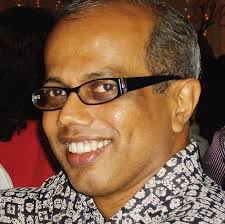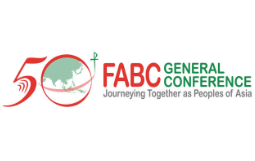Controversy over homelessness reveals disturbing trends
On July 3 came the shock announcement by Federal Territories Minister Tengku Adnan Tengku Mansor that soup kitchens would no longer be allowed to operate within a 2km radius of Lot 10 in Kuala Lumpur with immediate effect.
Jul 11, 2014

By Anil Netto
On July 3 came the shock announcement by Federal Territories Minister Tengku Adnan Tengku Mansor that soup kitchens would no longer be allowed to operate within a 2km radius of Lot 10 in Kuala Lumpur with immediate effect.
“This activity just encourages people to remain homeless and jobless,” said Tengku Adnan. “There have been many such people whom we have found jobs for, who returned to that life because they said it is easier.” The minister also added that laws would be amended to allow authorities to arrest alms-givers and beggars. Tengku Adnan’s comments provoked a firestorm of responses on social media, with many Malaysians indignant that a compassionate act like providing food to the homeless should be barred from KL’s Golden Triangle.
But there is a silver lining in the controversy. First, it has put the spotlight firmly on the homeless who all along had been largely ‘invisible’. In fact, many were surprised to see social media photos of the large crowds of street people so close to the glittering malls and gleaming towers of downtown KL.
Second, it has showcased the unheralded and unsung heroic efforts of NGOs and volunteers in reaching out to the homeless in our cities. Some of these efforts have provided a glimpse of ‘1Malaysia’ — but not the top-down variety imposed by Putrajaya. Rather these were just ordinary Malaysians, from all sorts of backgrounds, heroically coming together in a genuine unity of purpose to alleviate the sufferings of their fellow Malaysians.
Third, the media publicity for these volunteer groups in the wake of the controversy has inspired more ordinary Malaysians to come out and volunteer their services at these soup kitchens.
But behind the surface of this controversy lurk some disturbing trends.
It has become clear that many of the homeless are made up of not just the unemployed or those with other problems such as mental illness. A sizeable proportion of the homeless, it would seem, are actually working adults — but their income levels are so low that they are unable to afford proper accommodation in the city.
This raises other issues: Are these homeless people the victims of our neo-liberal model of development, which rewards Big Capital while weakening the position of workers and the trade union movement?
Is our minimum wage of RM900 per month too low to enable workers in the city to live with dignity? While Big Business is reluctant to raise wages for workers, some analysts have argued that keeping wages low actually hurts economic prosperity, and ironically, the big firms. This is simply because, if workers are paid low wages, they will be unable to afford the goods and services that Big Business produces. This in turn hurts the profits of these companies and makes their manufacturing operations less profitable.
That being the case, many of these firms then turn to speculative (and unproductive) activity to boost their profits — like gobbling up prime real estate and agriculture land in the hope their value will soar in the future. The financing is provided by banks and other financial institutions. It is such speculative activity that the Bishop of Rome recently blasted. This homeless phenomenon should also put the spotlight on our Social Welfare Department and our less than adequate social security safety nets. Judging by the numbers that show up at these soup kitchens, it is obvious that many are simply falling through the nets. Not only are wages too low for many, it is clear there is not enough low-income housing. And when even the middle class are feeling the pain of higher food prices, what more the lower-income group. All this should be obvious enough for anyone who takes the time to ponder over the issue. But there is one final disturbing thought over this 2km exclusion zone from Lot 10. (What is so special about Lot 10, anyway?) Instead of lauding the work of those who have come to the aid of the homeless, why are those in authority trying to drive away the homeless from the city centre? By now, it should be obvious that we have a serious income inequality problem in the country — the result of our neoliberal model of development. The real reason for the exclusion zone, I suspect, is because the visible presence of the underclass is a problem for those who have profited from the system. They are a reminder, a prick on their conscience, that huge profits do not come out of nowhere. Often, retained profits come on the back of low taxes and low wages. And lower corporate taxes means the government does not have enough revenue to provide sufficient social security services and affordable housing and subsidies for the poor.
The insidious plan to criminalise alms giving and begging also reflects this corporate mindset. When big companies ask for incentives and handouts which the state duly provides, this is not regarded as begging or ‘alms giving’. Recently, the Petronas CEO, Shamsul Azhar, who manages our oil resources, reportedly complained about companies asking the national oil corporation for allocations and handouts and for contracts to be marked up 35 per cent above market prices.
Instead of looking at how our public funds are being wasted, leaked and siphoned away, now the authorities want to make it a crime for people to give alms to people on the street? The presence of the homeless reminds us that we have failed our fellow Malaysians. Meanwhile, the wealthier class have retreated into gated communities, with security guards, card operated or remote-control electronic barrier gates and closed circuit cameras to keep out the ‘riff raff’ (or rather, that’s the way they are perceived).
These are physically sited far way from low-income highrise flats, often in poor condition.
So now, not only do we have an income gulf between the rich and poor. This gulf now threatens to evolve into a physical chasm where the homeless will be prevented from intruding into the spaces of the well-heeled and not only around Lot 10. Already, we can see such an unofficial physical divide in other residential and shopping areas where the wealthier class hangs out in other urban centres in the country.







Total Comments:0